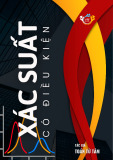
* Corresponding author. Tel: +91-9479934701
E-mail addresses: jyoti_vimal@yahoo.com (J. Vimal)
© 2014 Growing Science Ltd. All rights reserved.
doi: 10.5267/j.esm.2014.4.001
Engineering Solid Mechanics 2 (2014) 229-238
Contents lists available at GrowingScience
Engineering Solid Mechanics
homepage: www.GrowingScience.com/esm
Free vibration analysis of moderately thick functionally graded skew plates
Jyoti Vimala*, R K Srivastavaa*, A D Bhatta and Avadesh K Sharmab
aDepartment of Mechanical Engineering, Motilal Nehru National Institute of Technology, Allahabad, India
bDepartment of Mechanical Engineering, Madhav Institute of Technology & Science Gwalior, India
A R T I C L E I N F O A B S T R A C T
Article history:
Received January 29, 2014
Received in Revised form
April, 14, 2014
Accepted 8 April 2014
Available online
10 April 2014
Finite element method is used to study the free vibration analysis of functionally graded skew
plates. The material properties of the skew plates are assumed to vary continuously through
their thickness according to a power-law distribution of the volume fractions of the plate
constituents. The first order shear deformation theory is used to incorporate the effects of
transverse shear deformation and rotary inertia. Convergence study with respect to the number
of nodes has been carried out and the results are compared with those from past investigations
available in the literature. Two types of functionally graded skew plates - Al/ZrO2 and
Al/Al2O3 are considered in this study and the effects of the volume fraction, different external
boundary conditions and thickness ratio on the natural frequencies are studied in detail.
© 2014 Growin
g
Science Ltd. All ri
g
hts reserved.
Keywords:
Functionally graded materials
Free vibration
Skew plates
1. Introduction
Functionally graded materials are a class of composites that have continuous variation of material
properties from one surface to another and thus eliminate the stress concentration found in laminated
composites. A typical functionally graded material is made from a mixture of ceramic and metal.
These materials are often isotropic but nonhomogeneous. The gradation of properties in an FGM
reduces the thermal stresses, residual stresses, and stress concentrations found in traditional
composites. The reason for interest in functionally graded materials (FGMs) is that it may be possible
to create certain types of FGM structures capable of adapting to operating conditions. The increase in
FGM applications requires accurate models to predict their responses.
There are many approaches used to describe the material gradient of FGMs which are
manufactured from two phases of materials. In general, most of the approaches are based on the
volume fraction distribution rather than developed from actual graded microstructures (Bao and

230
Wang 1995, Frostig and Shenhar 1995). Reddy (2000) presented a theoretical formulation and finite
element models for functionally graded plates (FGPs) based on the third-order shear deformation
theory. The formulations accounted for the thermo mechanical coupling, time dependency, and von
Ka´rma´ n-type geometric nonlinearity of the plates. A review on the stress and vibration analysis of
composite plates is studied by Sharma and Mittal (2010). Free vibration analysis of laminated
composite plates with elastically restrained edges using FEM is studied by Sharma and Mittal (2013).
The governing equations employed are based on the first order shear deformation theory including
the effects of rotary inertia. Several combinations of translational and rotational elastic edge
constraints are considered.
Fukui and Yamanaka (1992) examined the effects of the gradation of components on the strength
and deformation of thick-walled functionally gradient material tubes under internal pressure. Fukui et
al. (1993) further extended their previous work by considering a thick-walled FGM tube under
uniform thermal loading, and investigated the effect of graded components on residual stresses. They
generated an optimum composition of the FGM tube by minimizing the compressive circumferential
stress at the inner surface. Neves et al. (2013) developed a higher order shear deformation theory
(HSDT) with cubic and parabolic variations for in-plane and transverse displacements, respectively,
based on Carrera’s unified formulation. With the use of polynomial functions in aforementioned
works, trigonometric functions are also employed in the development of HSDTs. The frequency
characteristics of thick annular FGPs of variable thickness were analyzed by Efraim and Eisenberger
(2007), who utilized the first-order shear deformation theory and exact element method to derive the
stiffness matrix.
Recently, Matsunaga (2008) carried out an analysis of the free vibration and stability of FGPs
using the two-dimensional higher-order deformation theory. Xiang et al. (2011) and Xiang and Kang
(2013) proposed a n-order shear deformation theory in which Reddy’s theory can be considered as a
specific case. The methods employed in the paper included a higher order shear deformation theory
and two novel solutions for FGM structures. According to this paper, the application of the normal
deformation theory may be justified if the in-plane size to thickness is equal to or smaller than 5.
Researchers have also turned their attention to the vibration and dynamic response of FGM’s
structures (Yang and Shen 2003, Huang and Shen 2004). Wu et al (2007) presented exact solutions
for free vibration analysis of rectangular plates using Bessel functions with three edges conditions.
Matsunaga (2008) presented in his paper, the analysis of natural frequencies and buckling of FGM’s
plates by taking into account the effects of transverse shear and normal deformations and rotary
inertia. For plates with cutouts, Chai (1996) presented finite element and some experimental results
on the free vibration of symmetric composite plates with central hole. Thus, needs exist for the
development of shear deformation theory which is simple to use. From the review of the above
literature it is observed that very little work has been done yet on the natural frequencies of the
functionally graded skew plates.
The aim of this paper is to develop a simple first order shear deformation theory for the free
vibration analysis of functionally graded skew plates. The first order shear deformation theory is used
to incorporate the effects of transverse shear deformation and rotary inertia. Numerical examples are
presented to verify the accuracy of the present theory. This work, thus, aims to study the free
vibration problem of functionally graded skew plates which have not been studied in detail as yet. An
FGM’s gradation in material properties allows the designer to tailor material response to meet design
criteria. The developed formulation is validated by extensive convergence and comparison studies of
functionally graded - Al/ZrO2 and Al/Al2O3 skew plates. The variation of natural frequencies is
studied with respect to the volume fraction exponent, different external boundary conditions and
thickness ratio. These results are presented through graphical plots.
2. Functionally Graded Material Properties

u
t
m
P
w
r
V
(
V
V
w
d
t
s
2
d
v
e
c
c
i
A functi
o
u
niform thi
c
t
he thickne
s
m
aterial pr
o
mm
VP
P
w
here P
m
,
P
r
espectivel
y
1.
cm
V
V
The po
w
(
1990) in o
r
c
V
) can the
n
c
h
z
V
2
1
w
here the
p
d
istance pa
r
t
he results
o
s
ubstituting
Fig. 1.
2
.1 Functio
n
SOLI
D
d
isplaceme
n
v
arious CA
D
e
ach node:
t
c
reep, stres
s
c
apability
f
i
ncompress
i
o
nally gra
d
c
kness that
s
s accordin
g
o
perties, P,
c
cc
VP
P
c
, V
m
and
V
y
, the comp
o
w
er law di
s
r
der to defi
n
n
be writte
n
n
p
ositive nu
m
r
ameter alo
n
o
f material
the equati
o
Geometry
n
ally Grad
e
D
187 elem
e
n
t behavior
D
/CAM sy
s
t
ranslation
s
s
stiffening
f
or simulati
n
i
ble hypere
l
d
ed materia
l
is made o
f
g
to a Powe
r
c
an be writ
t
V
c
are the m
a
o
sitions rep
s
tribution
b
n
e the effe
c
n
as follows
0,
m
ber n
0
n
g the grad
e
properties
o
ns of mate
r
of a skew
p
e
d Plate El
e
e
nt is a h
i
and is wel
l
s
tems). Th
e
s
in the nod
a
, large def
l
n
g deform
a
l
astic mate
r
J. Vimal et al.
/
l
plate as s
h
f
ceramic a
n
r
-Law distr
i
t
en as
a
terial prop
e
r
esent in re
l
b
ased on th
e
tive materi
a
:
e
d directio
n
according
r
ial volume
p
late
e
ments
i
gher orde
r
l
suited to
m
e
element is
a
l x, y, and
l
ection, an
d
a
tions of n
e
ials.
/ Engineering Solid M
e
h
own in Fi
g
n
d metal.
T
r
ibution. O
n
e
rties and t
h
lation to
e
rule of
m
a
l properti
e
is the po
w
n
, while, h
i
to the po
w
fractions
E
F
r
3-D, 10-
n
m
odeling ir
r
defined b
y
z directio
n
d
large stra
i
e
arly inco
m
e
chanics 2 (2014)
g
. 1 and Fi
g
T
he materia
l
n
the
b
asic
o
h
e volume
m
ixture wa
s
e
s of FGMs
.
w
er law or
i
s the total
l
w
er law dis
t
E
q. (2) and
E
F
i
g
. 2. Fun
c
n
ode elem
e
r
egular me
s
y
10 nodes
h
n
s. The ele
m
n capabilit
i
m
pressible
e
Ceramic
Metal
g
. 2 is con
s
l
property i
o
f the rule
o
fraction of
introduce
d
.
The volu
m
the volum
e
ength of th
e
t
ribution, t
h
E
q. (3) into
c
tionally G
r
e
nt. SOLI
D
s
hes (such
a
h
aving thre
e
m
ent has pl
a
i
es. It also
h
e
lastic-plas
t
s
idered to
b
i
s to be gra
d
o
f mixture,
t
the metal
a
d
by Waka
s
m
e fraction
o
e
fraction i
n
e direction.
h
is can be
a
Eq. (1).
r
aded Plate
D
187 has
a
s those pr
o
e
degrees o
f
a
sticity, hy
p
has mixed
t
ic materia
l
2
3
b
e a plate o
d
ed throug
h
t
he effectiv
e
(1
a
nd cerami
c
(2
s
hima et a
l
o
f ceramic
(3
n
dex. z is
a
To find o
u
a
chieved b
y
a quadrati
c
o
duced fro
m
f
freedom
a
p
erelasticit
y
formulatio
n
s, and full
y
3
1
f
h
e
)
c
,
)
l
.
(
)
a
u
t
y
c
m
a
t
y
,
n
y

232
Fig. 3. SOLID 187 element
The geometry, node locations, and the coordinate system for this element are shown in Fig. 3. In
addition to the nodes, the element input data includes the orthotropic or anisotropic material
properties.
3. Mathematical Formulation
Fig. 1 shows the geometry of a Functionally Graded Plates plate. Considering the first order shear
deformation theory, the displacement fields are expressed as follows (Reddy, 1997).
),,(),,,(
),,(),,(),,,(
),,(),,(),,,(
0
0
0
tyxwtzyxw
tyxztyxvtzyxv
tyxztyxutzyxu
y
x
(4)
where ( 0
u,0
v,0
w,x
,y
) are unknown functions to be determined. As before, ( 0
u,0
v,0
w) denote the
displacements of a point on the plane z = 0; Note that
z
u
= x
, z
v
= ,
y
(5)
which indicate that x
and y
are the rotations of a transverse normal about the y and x axes,
respectively. The strain displacement relations can be expressed as follows.
In-plane strains at the mid-plane are:
x
u
x
0
0 (6)
y
v
y
0
0 (7)
x
v
y
u
xy
00
0 (8)
x
kx
x
0(9)
y
ky
y
0
(10)
xy
ky
x
xy
0
(11)
The shear strains in xz and yz planes are:
x
w
xxz
0
(12)

J. Vimal et al. / Engineering Solid Mechanics 2 (2014)
233
y
w
yyz
0
(13)
The strain components at any point can thus be expressed as:
(0) (0)
(0) (0)
(0)
(0)
(0)
(0)
0
0
xx xx
xx
yy
yy yy
yz yz
xz xz
xy
xy xy
k
k
z
k
(14)
xy
y
x
z
x
v
y
u
x
w
y
w
y
v
x
u
y
x
y
x
x
y
xy
xz
yz
yy
xx
0
0
00
0
0
0
0
(15)
4. Numerical Results and Discussion
The present study gives the free vibration results of moderately thick functionally graded skew
plates. The effects of volume fraction index, boundary conditions and length to thickness ratio are
studied. To verify the results, the convergence study of functionally graded skew plates is first
examined with respect to the mesh dimensions (M×N). Plates with the length-to-thickness ratios (a/h
=10) and the values of the volume fraction exponent, n = 0, 0.5,1, 3, 5, 10, 200 are considered. The
default parameter values of the functionally graded plates are as given in Table 1.
Table 1. Properties of the FGM components:
Material Properties
E (N/m2) ν ρ (Kg/m3)
Aluminum (Al) 70.0x109 0.30 2707
Alumina(Al2O3) 380x109 0.30 3800
Zirconia(ZrO2) 151x1090.30 3000
The accuracy and convergence behaviors of the first eight frequency parameters are tested in
Tables 2 and 3 for the functionally graded skew plates with clamped edges. In order to show the
accuracy of methodology used for free vibration analysis of FG skew plates, the fundamental natural
frequencies of different plates are compared with the solutions presented by Zhao et al. (2009). To
validate the isotropic skew plate with respect to the volume fraction index, n=0 and skew angle,
α=30, the convergence study is as given in Table 2, and to validate the isotropic skew plate with
respect to the volume fraction index n=0 and α=15, the convergence study is as given in Table 3. It
can be seen in these Tables that convergence is achieved at the mesh size of (20 x 20). It is obvious
that by increasing the number of grid points, the accuracy of the results is also increases. It is found
that the results of this study show a trend of monotonic convergence trend, and the solutions are
















